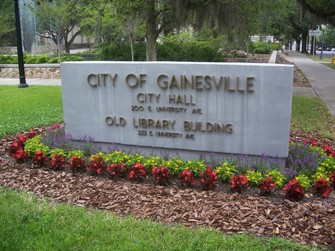« Prev Next »

It's been a little more than a month since I made my move from the northeast to Gainesville, Florida to begin a new graduate program. Since then, I've had a relatively smooth transition into the area - all except for my navigational sense of direction.
Having just left a small college town with relatively simple roads and suburban design, I find myself easily lost in Gainesville's network of main streets and winding backroads.
When I first arrived to the scene, the historic districts were a maze to me- palm trees everywhere and everything engulfed in Spanish moss, obscuring virtually every landmark. For an entire week I depended on technology to tell me where to turn, how long to drive, and what times to avoid busy streets.
At one point, marginally getting better at navigating, I decided to do away with the GPS and rely on my own internal navigational system-the hippocampus and entorhinal cortex.
The cells responsible for our sense of spatial location, or "place cells," were discovered in rat hippocampi in1971 by John O'Keefe of University College London. Known for its role in memory processing and retrieval, it should come as no surprise that the hippocampus is also essential for spatial navigation and encoding spatial memories.

These cells seem to have intrinsic memory functions. For example, O'Keefe showed that the rearrangement of place cells in different environments could be the basis of spatial learning. Specific combinations of place cells could serve as a specific memory of an environment and could be stably maintained.
These place and grid cell systems give the individual a sense of recognition when navigating relatively unfamiliar places and possibly play a role in why recalling events often involves re-envisioning space.
Perhaps most intriguing is how grid cells use sharply tuned firing fields to encode the spatial world. The Mosers implanted electrodes into rat entorhinal cortices and recorded from them as the rat ran freely in a large box scattered with chocolate treats. While the recordings in place cells showed single firing locations, electrodes in the entorhinal cortex mapped the exact spot on the floor of the box where each entorhinal neuron fired, appearing as a hexagonal grid when mapped out.
So how does this honeycomb arrangement translate to spatial navigation?

Sensory information should not be excluded from the larger picture, however. It is thought that sensory information related to the environment is used for setting the initial parameters of the entorhinal grids, or adjusting the grids to correct for errors related to movement and velocity.
Together, the activity of place cells in the hippocampus and the grid cells in the entorhinal cortex may be used in the extensive map-making that our brains undergo when navigating a new city.
In the meantime, I'll continue to challenge my internal GPS, but then again, maybe not. Seeing as how the Gators are now 5-0, the only navigating I'll be doing in the immediate future will likely be to The Swamp and back.
Image credit: Mattias Karlen
References:
Ekstrom, A.D., Kahana, M.J., Caplan, J.B., Fields, T.A., Isham, E.A., Newman, E.L., and Fried, I. (2003). Cellular networks underlying human spatial navigation. Nature 425, 184-188.
Hafting, T., Fyhn, M., Molden, S., Moser, M.-B., Moser, E. I. Nature 436, 801-806 (2005).
Lever, C., Wills, T., Cacucci, F., Burgess, N., and O'Keefe, J. (2002). Long-term plasticity in hippocampal place-cell representation of environmental geometry. Nature 416, 90-94.
Moser, E., Kropff, E. & Moser, M.-B. Place Cells, Grid Cells, and the Brain's Spatial Representation System.Annu. Rev. Neurosci. 31, 69-89 (2008).
O'Keefe, J., and Conway, D.H. (1978). Hippocampal place units in the freely moving rat: why they fire where they fire. Experimental brain research 31, 573-590.






















